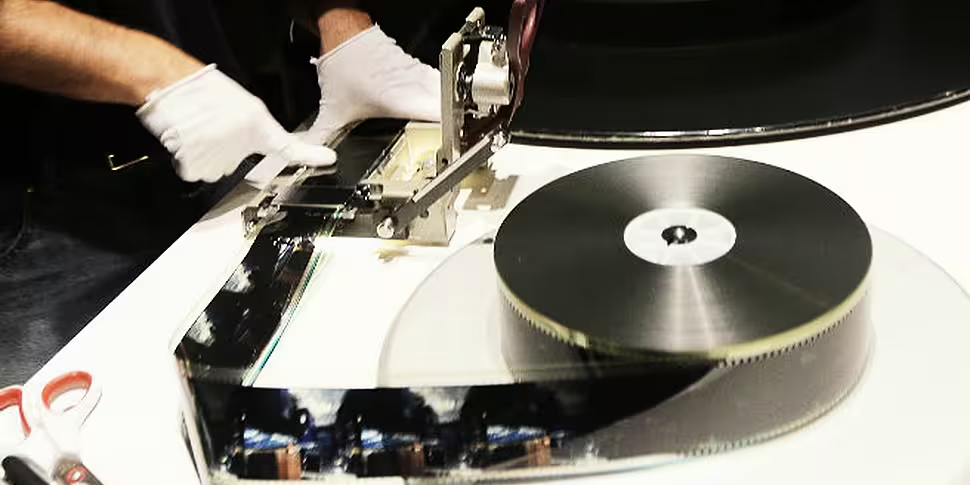Quentin Tarantino's The Hateful Eight is finally being released in Irish cinemas on Friday - well, some of them at least.
An already tumultuous launch for the film - including a very high profile online leak - took a surprising turn after a number of major cinema chains in the UK & Ireland announced they would not be showing the film due to a dispute with the film's distributor.
A number of chains have since changed their stance - including IMC cinemas here, who say they will now screen the film - but others, most prominently Cineworld, will not be showing what is undoubtedly one of the biggest films of the next few months.
The dispute, at least in part, revolves around a handful of cinemas in London's West End, where only one theatre has been given the opportunity to screen the film's 70mm version - Tarantino's preferred version. As distributors Entertainment Film said in a statement, "Cineworld had made us aware that they were very unhappy that The Hateful Eight had been booked into the Odeon Leicester Square for an exclusive 70mm Ultra Panavision presentation, and specifically that they would therefore not be able to play the film at their Picturehouse Central venue".
So... what is the 70mm presentation? In relation to this film specifically, Tarantino and his producers have pulled out all the stops for the 70mm 'Roadshow' release, including extra footage, an overture and an interval not included in the film's standard digital theatrical version. Let Samuel L Jackson and Tarantino himself explain it to you...
In a way, it's understandable that competing cinemas were quite keen to get their hands on these exclusive prints - especially in the congested, commercially valuable cinema space that is central London. It is regrettable that the consequences are being felt in Ireland, though.
More generally, 70mm refers to a high-resolution traditional film format. Before the digital revolution of the last decade, the vast majority of cinemas were equipped with 35mm film projectors - and, indeed, most of the movies themselves were shot on cameras using 35mm film formats. 70mm is a higher standard, with the likes of IMAX cameras and screens a variant of the format. (Just to clarify things, the IMAX screen currently in Cineworld Dublin is digital IMAX, which is not at all the same as the full film format, 70mm IMAX screens that still exist in a few lucky cities around the world).
I won't go into the technical description in much depth here, but in a nutshell: in the cameras themselves the images are shot on a 65mm wide roll of film. For exhibition and projection the image is printed on to slightly wider 70mm film. Each frame has a widescreen aspect ratio of 2.22:1, usually displayed as 2.35:1 - basically meaning it is significantly wider than it is long (current television standard is the significantly narrower 16:9).
70mm, it must be said, is a very rarely used format. Filming in the format is incredibly expensive - it's why some films, such as The Dark Knight, feature only a handful of key scenes shot on 70mm or IMAX cameras, the rest shot on more cost effective formats. When it comes to showing the films, there's a tiny number of screens equipped with 70mm projectors (in fact, even 35mm projectors are an increasing rarity). There's only one 70mm screen in Ireland, for example, in Dublin's Irish Film Institue. The Hateful Eight complicates things further by being presented in a super-wide 2.75:1 aspect ratio - an archaic but undeniably fetching widescreen format that many modern cinemas are ill-equipped to display in all its glory, let alone televisions, laptops or - heaven forbid - phones.
Why all the fuss then? Why do directors like Tarantino, Christopher Nolan (the most vocal of 70mm fans and who has already announced his upcoming Dunkirk will be shot on high-quality film) and Paul Thomas Anderson (The Master, Inherent Vice) shoot their films that way and go to so much trouble to have them screened in 70mm?
One could suggest that it's a little like the vinyl vs digital debate in music - some more casual observers may not notice or care, but for the converted and purists there's simply no comparison. It's the richness of the colour, lighting, and shadow. There's more detail in the image, even compared to some of the higher quality digital formats. It's that hard-to-define 'feel' and look of a 70mm print that you simply do not get with digital.
For a breakdown of both the technical and artistic merits of film vs digital, the documentary Side by Side - narrated by Keanu Reeves, of all people - is an excellent, accessible primer that presents both sides of the argument.
In essence, this is what all the fuss is about. A few prominent directors are using their influence and resources to ensure that film formats like 70mm do not become extinct in an overwhelmingly digital world. For many viewers, happy to watch films at home or on their laptops, this must all seem like much ado about nothing. For many film fanatics, it's a battle well worth fighting, even when it causes major inconvenience as it has done here.
Oh, and as for The Hateful Eight and Ireland? Unfortunately, there are no 70mm screenings planned for this week's release. However, the IFI - which is showing the standard digital version from Friday - has said on its Facebook page they are hoping to procure a print for screening further down the road like they did for Interstellar. Fingers crossed...









